Abstract
The osmotic pressure of the cell sap of stalk storage parenchyma of sugarcane (Saccharum spp. hybrids) increases by an order of magnitude during ontogeny to reach molar concentrations of sucrose at maturity. Stalk parenchyma cells must either experience very high turgor at maturation or have an ability to regulate turgor. We tested this hypothesis by using pressure probe techniques to quantify parameters of cell and tissue water relations of sugarcane storage parenchyma during ontogeny. The largest developmental change was in the volumetric elastic modulus, which increased from 6 bars in immature tissue to 43 bars in mature tissue. Turgor was maintained relatively low during sucrose accumulation by the partitioning of solutes between the cell and wall compartments. Membrane hydraulic conductivity decreased from about 12 × 10−7 centimeters per second per bar down to 4.4 × 10−7 centimeters per second per bar. The 2.7-fold decrease in membrane hydraulic conductivity during tissue maturation was accompanied by a 7.8-fold increase in wall elasticity. Integration of the cell wall and membrane properties appears to be by the opposing effects of turgor on hydraulic conductivity and elastic modulus. The changes in these properties during development of sugarcane stalk tissue may be a way for parenchyma cells to develop a capacity for expansive growth and still serve as a strong sink for storing high concentrations of sucrose.
Full text
PDF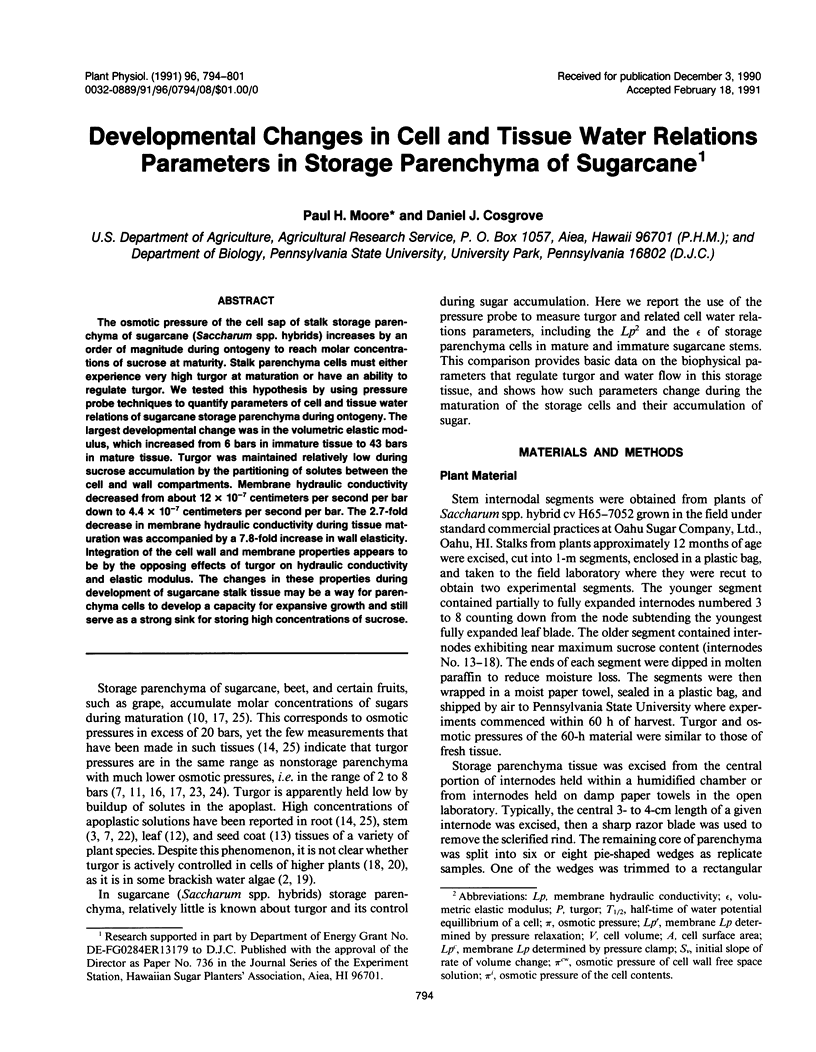
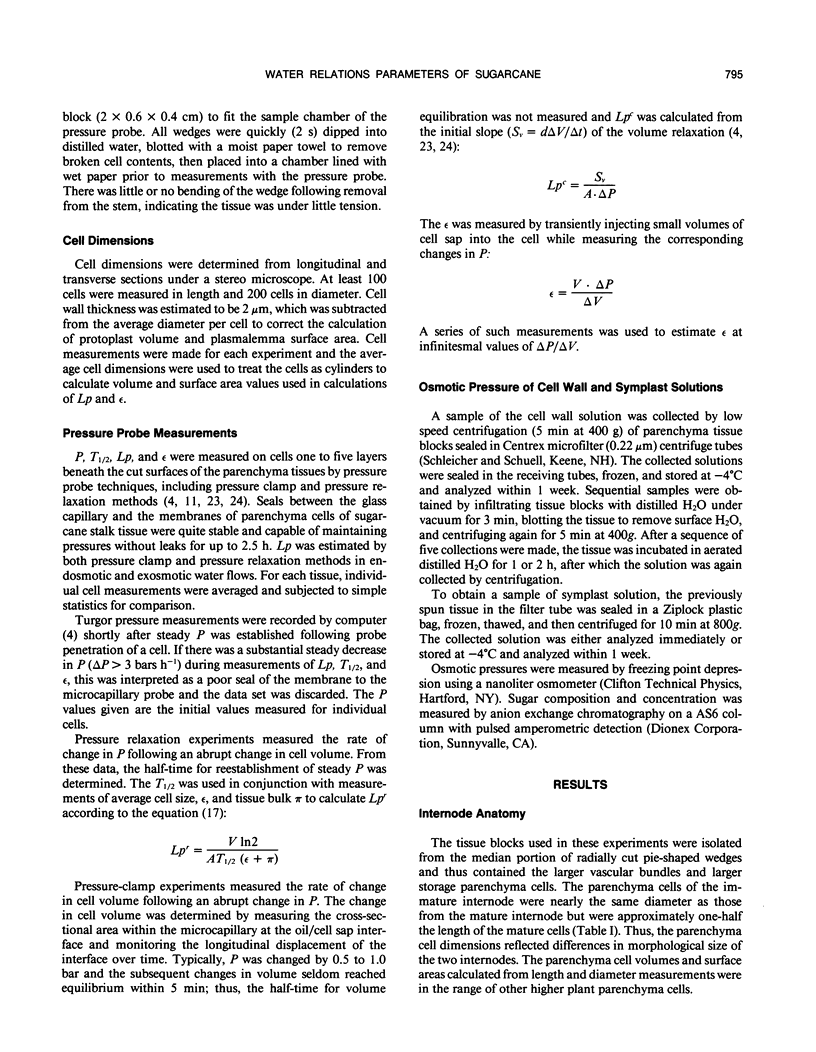
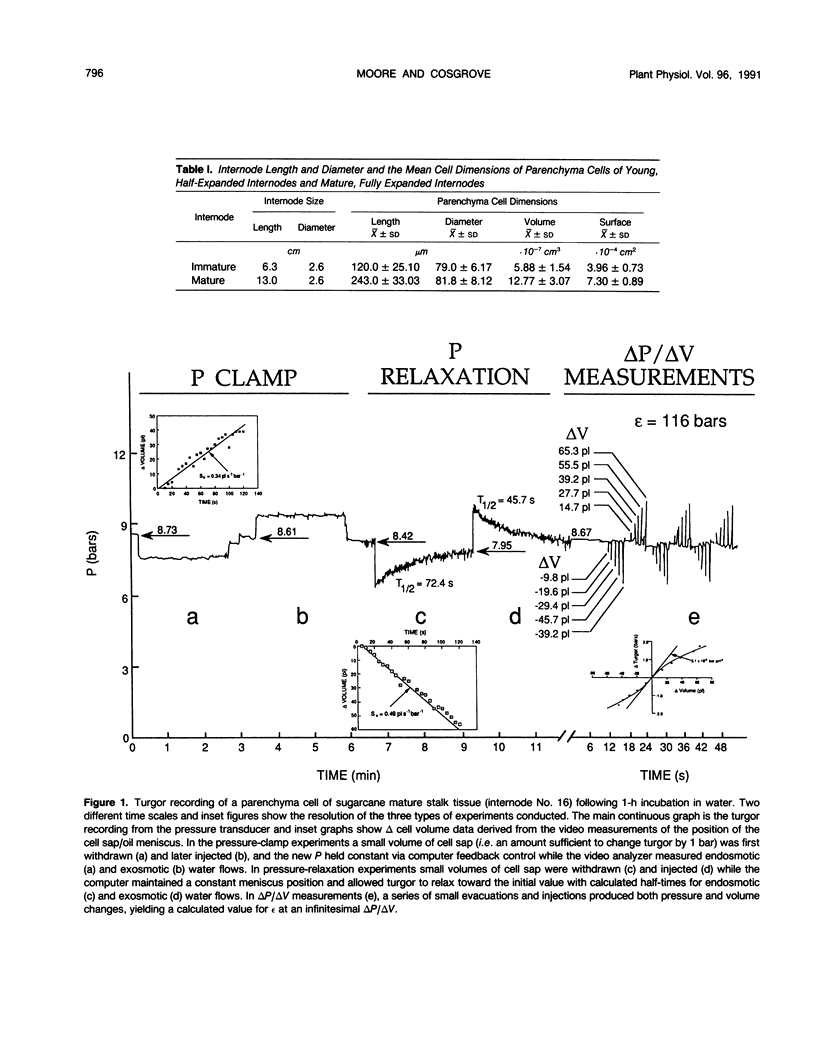
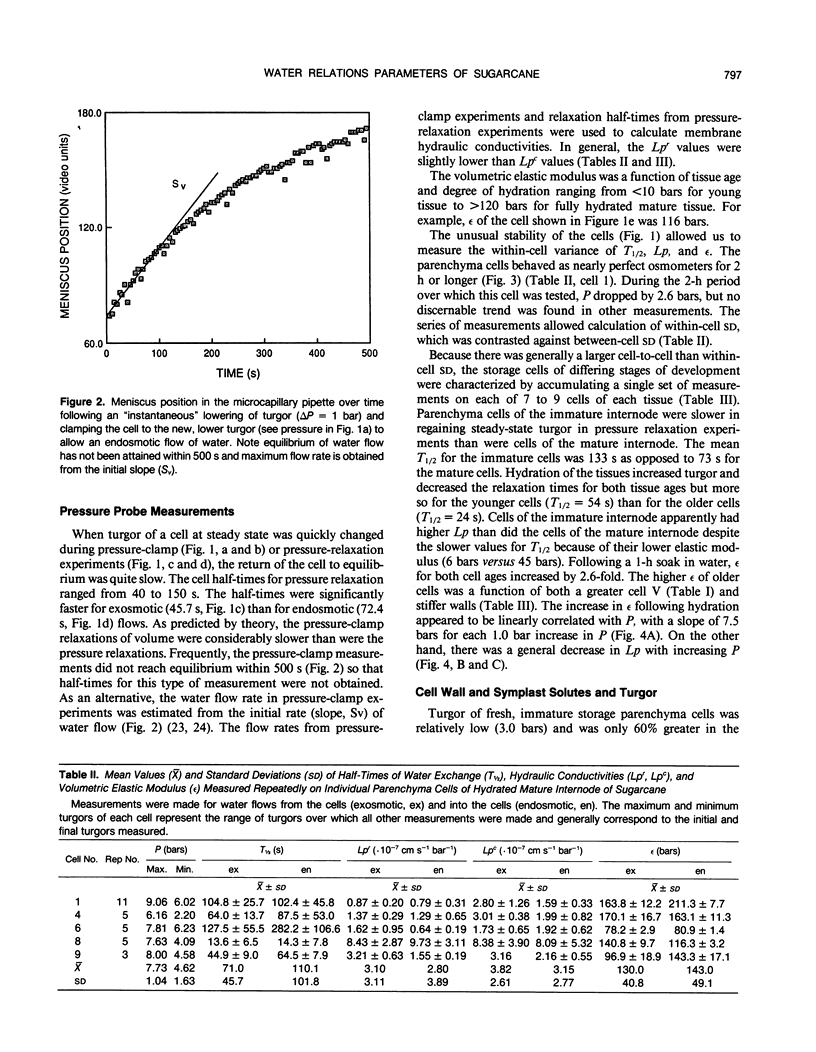
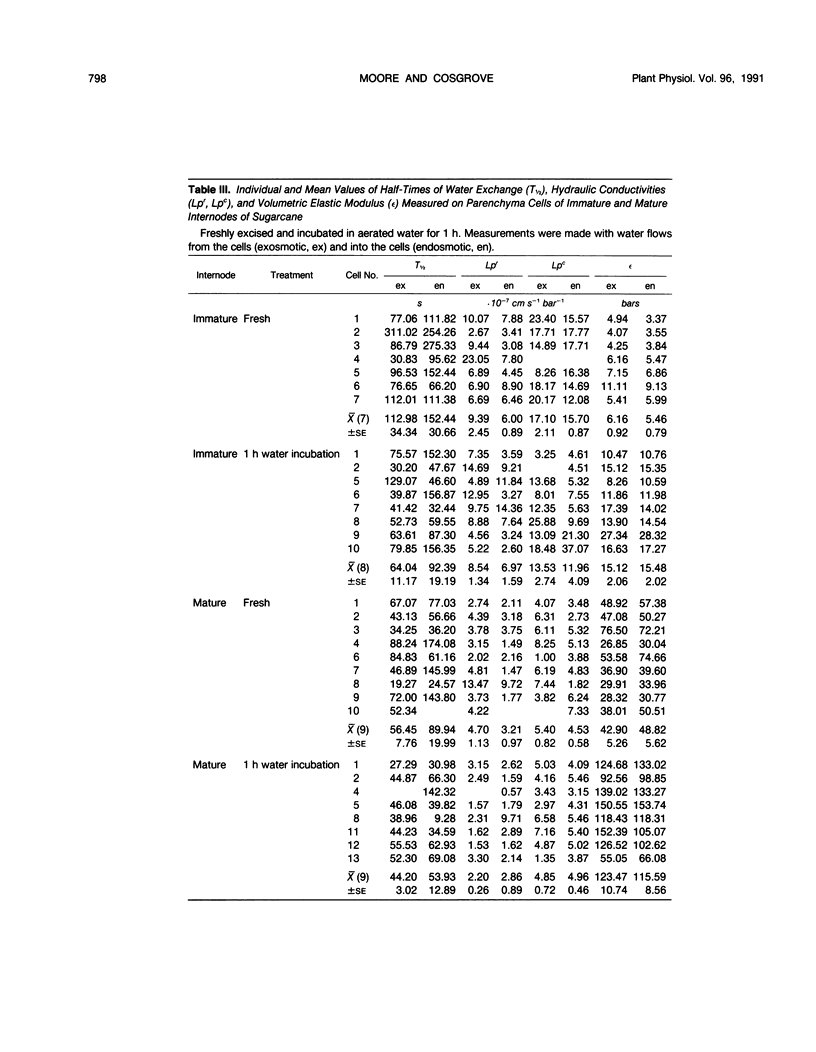
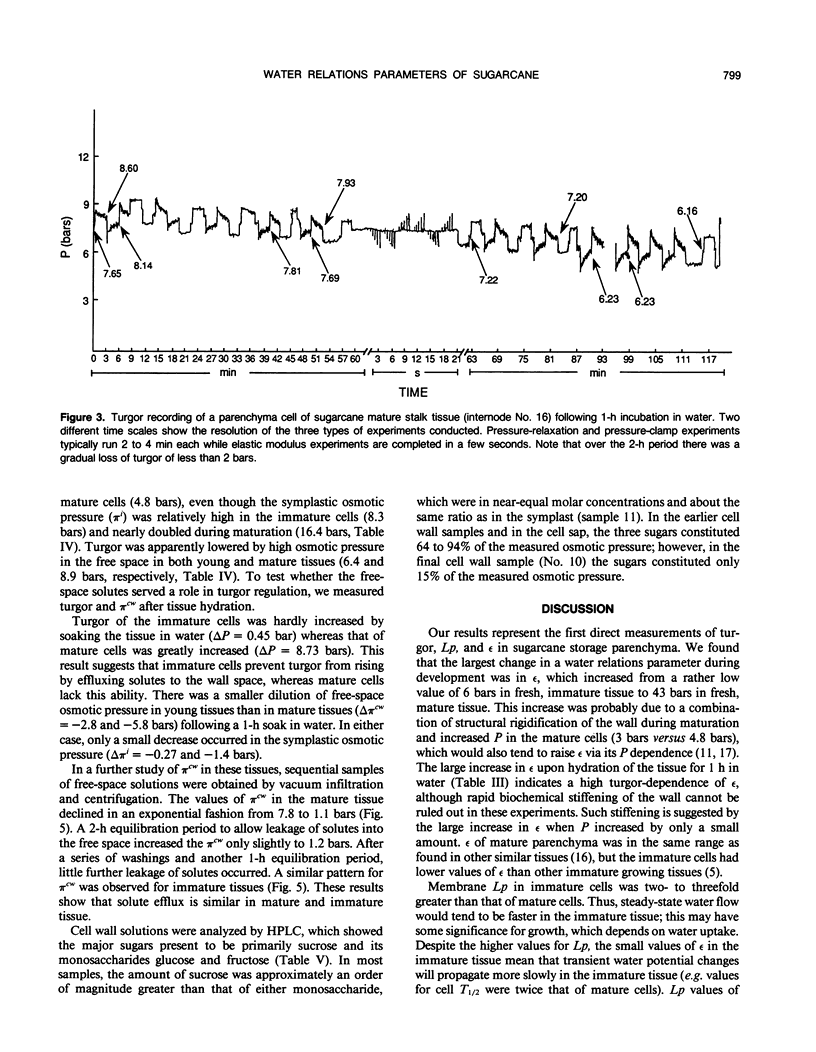
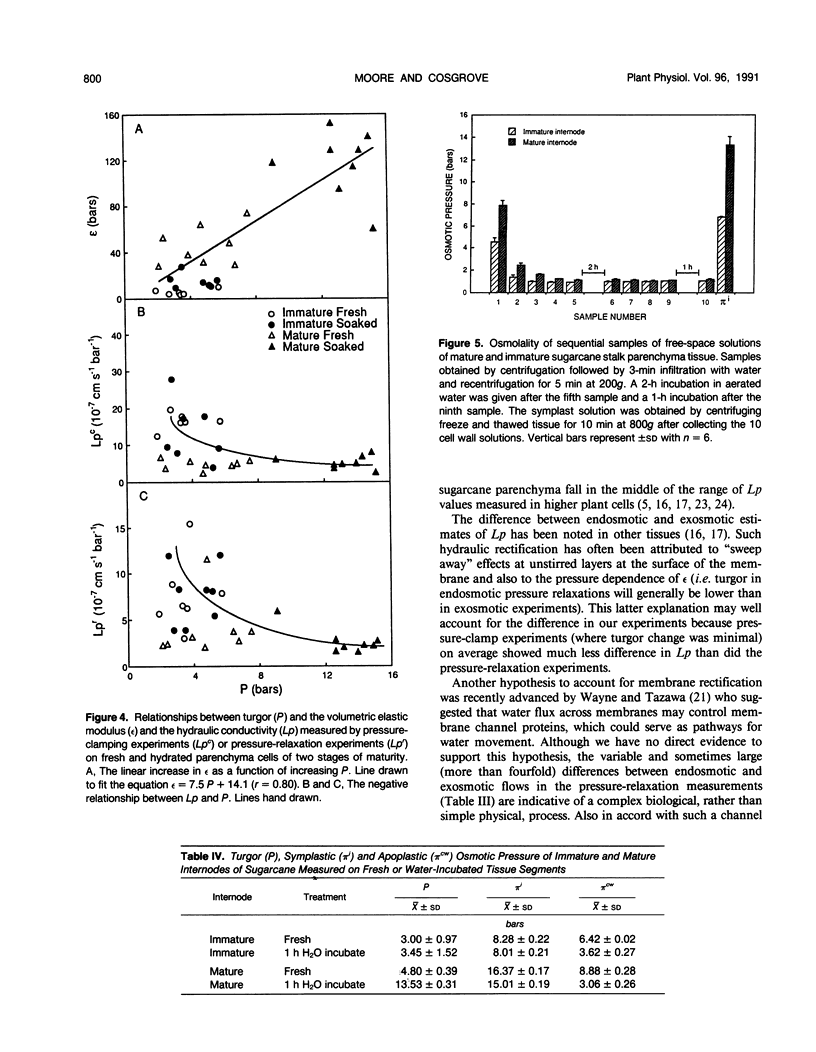
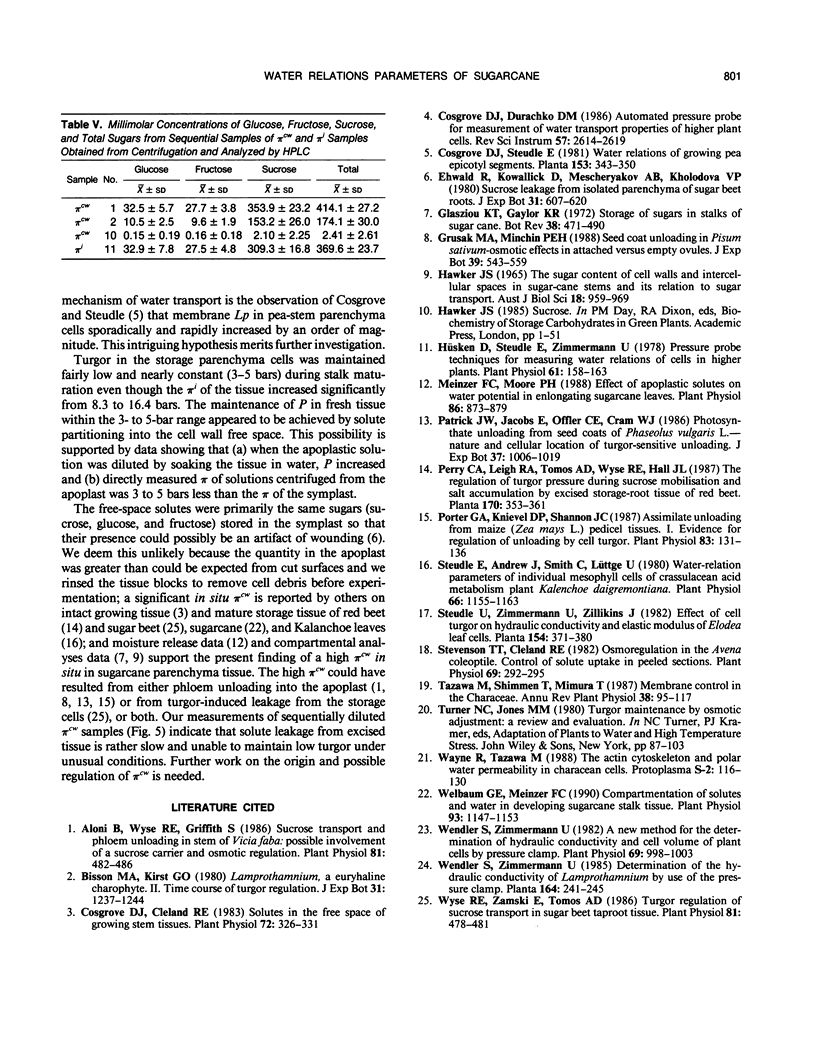
Selected References
These references are in PubMed. This may not be the complete list of references from this article.
- Aloni B., Wyse R. E., Griffith S. Sucrose Transport and Phloem Unloading in Stem of Vicia faba: Possible Involvement of a Sucrose Carrier and Osmotic Regulation. Plant Physiol. 1986 Jun;81(2):482–486. doi: 10.1104/pp.81.2.482. [DOI] [PMC free article] [PubMed] [Google Scholar]
- Cosgrove D. J., Cleland R. E. Solutes in the free space of growing stem tissues. Plant Physiol. 1983 Jun;72(2):326–331. doi: 10.1104/pp.72.2.326. [DOI] [PMC free article] [PubMed] [Google Scholar]
- Hüsken D., Steudle E., Zimmermann U. Pressure probe technique for measuring water relations of cells in higher plants. Plant Physiol. 1978 Feb;61(2):158–163. doi: 10.1104/pp.61.2.158. [DOI] [PMC free article] [PubMed] [Google Scholar]
- Meinzer F. C., Moore P. H. Effect of apoplastic solutes on water potential in elongating sugarcane leaves. Plant Physiol. 1988 Mar;86(3):873–879. doi: 10.1104/pp.86.3.873. [DOI] [PMC free article] [PubMed] [Google Scholar]
- Porter G. A., Knievel D. P., Shannon J. C. Assimilate Unloading from Maize (Zea mays L.) Pedicel Tissues : I. Evidence for Regulation of Unloading by Cell Turgor. Plant Physiol. 1987 Jan;83(1):131–136. doi: 10.1104/pp.83.1.131. [DOI] [PMC free article] [PubMed] [Google Scholar]
- Steudle E. Water-relation Parameters of Individual Mesophyll Cells of the Crassulacean Acid Metabolism Plant Kalanchoë daigremontiana. Plant Physiol. 1980 Dec;66(6):1155–1163. doi: 10.1104/pp.66.6.1155. [DOI] [PMC free article] [PubMed] [Google Scholar]
- Stevenson T. T., Cleland R. E. Osmoregulation in the Avena Coleoptile : CONTROL OF SOLUTE UPTAKE IN PEELED SECTIONS. Plant Physiol. 1982 Feb;69(2):292–295. doi: 10.1104/pp.69.2.292. [DOI] [PMC free article] [PubMed] [Google Scholar]
- Welbaum G. E., Meinzer F. C. Compartmentation of solutes and water in developing sugarcane stalk tissue. Plant Physiol. 1990 Jul;93(3):1147–1153. doi: 10.1104/pp.93.3.1147. [DOI] [PMC free article] [PubMed] [Google Scholar]
- Wendler S., Zimmermann U. A new method for the determination of hydraulic conductivity and cell volume of plant cells by pressure clamp. Plant Physiol. 1982 May;69(5):998–1003. doi: 10.1104/pp.69.5.998. [DOI] [PMC free article] [PubMed] [Google Scholar]
- Wyse R. E., Zamski E., Tomos A. D. Turgor regulation of sucrose transport in sugar beet taproot tissue. Plant Physiol. 1986 Jun;81(2):478–481. doi: 10.1104/pp.81.2.478. [DOI] [PMC free article] [PubMed] [Google Scholar]


